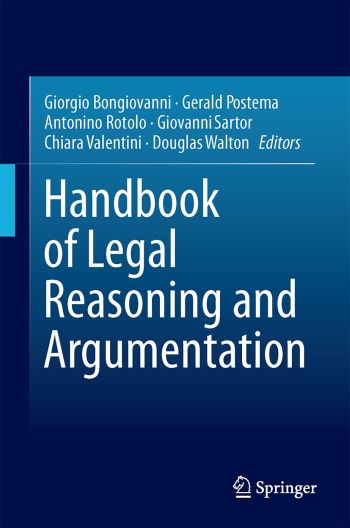
This handbook offers a deep analysis of the main forms of legal reasoning and argumentation from both a logical-philosophical and legal perspective. These forms are covered in an exhaustive and critical fashion, and the handbook accordingly divides in three parts: the first one introduces and discusses the basic concepts of practical reasoning. The second one discusses the main general forms of reasoning and argumentation relevant for legal discourse. The third one looks at their application in law as well as at the different areas of legal reasoning. The handbook's division in three parts reflects its conceptual architecture, since legal reasoning and argumentation are considered in relation to the more general types (and problems) of reasoning.